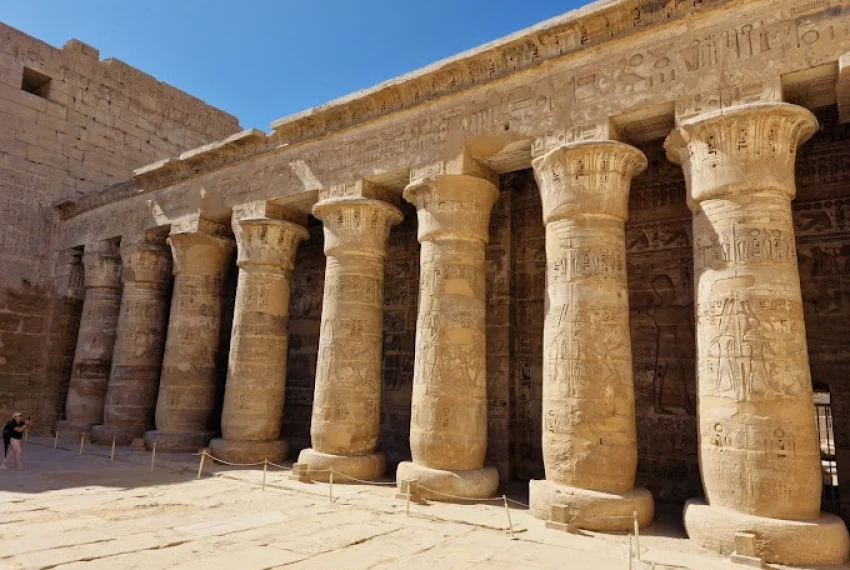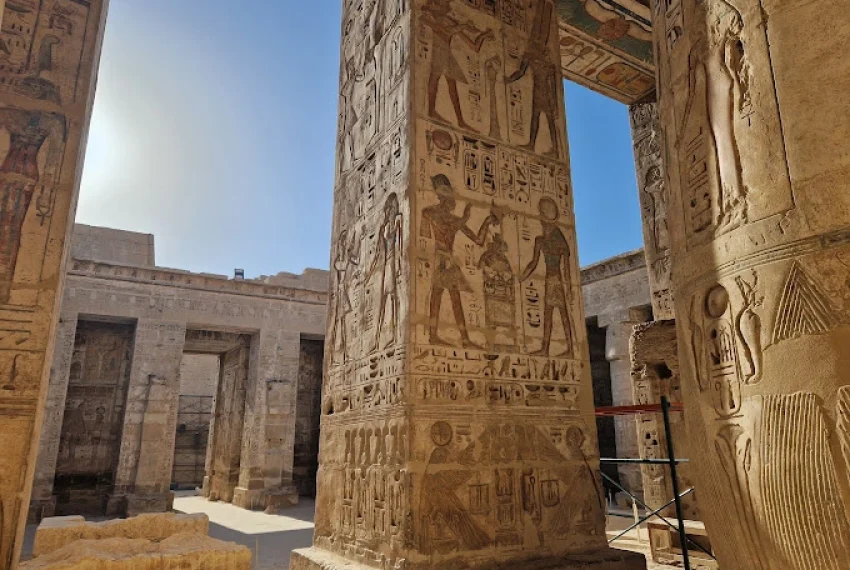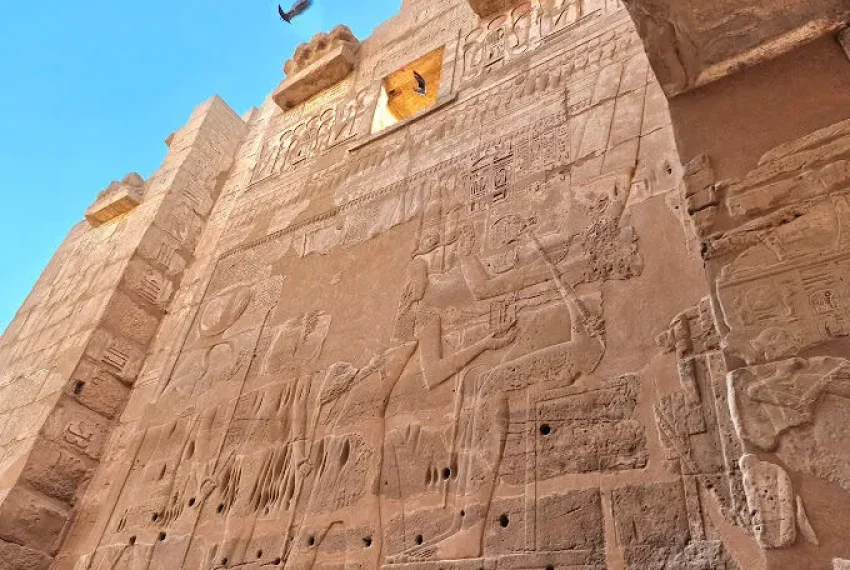One of the best-preserved temples of ancient Egypt is housed in the expansive complex known as Medinet Habu, which is situated in Luxor on the west bank of the Nile River. Anyone interested in ancient Egyptian history and architecture must visit the temple complex, which was constructed in the 12th century BC during the reign of Ramesses III. We shall delve into the intriguing background and relevance of Medinet Habu in this blog.

The temple complex of Medinet Habu was constructed as a tribute to the pharaoh Ramesses III, who ruled during a period of political and social upheaval in ancient Egypt. Towering pylons, intricate sculptures, and fine reliefs are just a few of the beautiful examples of ancient Egyptian architecture found in the temple, which was built over a number of years.
Throughout different eras of Egyptian history, the temple served as a fortress as well. Medinet Habu served as a vital military stronghold during Ramesses III’s rule, aiding in defending Thebes from outsiders. In order to improve the temple’s defences, its walls were strengthened, reinforced, and more buildings were built.

One of the best examples of ancient Egyptian architecture still standing is the Medinet Habu temple complex. The main temple, multiple courtyards, and several smaller structures and shrines make up the complex’s various components. Towering pylons with complex carvings and hieroglyphics can be seen on the main temple, which is devoted to the deity Amun.
The hypostyle hall, which has imposing columns supporting the temple’s ceiling, is one of several halls and chambers that tourists may see inside the temple. The temple’s walls are adorned in intricate reliefs that show incidents from Ramesses III’s life as well as representations of numerous gods and goddesses.
One of the best specimens of pre-dynastic Egyptian architecture is seen at the Medinet Habu temple complex. The complex is split up into many areas, with the main temple, a number of courtyards, and smaller structures and shrines. The main temple, which honours the deity Amun, is distinguished by its imposing pylons and elaborate sculptures and hieroglyphics.
The hypostyle hall, which has imposing columns supporting the temple’s ceiling, is one of several halls and chambers inside the building that tourists can explore. Detail-rich reliefs that portray incidents from Ramesses III’s life as well as representations of many gods and goddesses decorate the temple’s walls.

A trip to Medinet Habu is essential if you’re considering travelling to Egypt. You may visit the temple complex on your own or as part of a guided tour; it is conveniently located near Luxor. To truly appreciate the complex’s beauty and historical value, visitors should schedule at least a few hours for exploration.
In conclusion, Medinet Habu is a magnificent example of ancient Egypt’s architectural and cultural accomplishments. Anyone interested in the history and culture of ancient Egypt should visit the temple complex, which gives visitors a fascinating look into the nation’s political, social, and religious history. Medinet Habu is perhaps one of the most amazing places with its magnificent architecture, complex carvings, and precise reliefs.